Butternut Squash Growing Stages
Butternut squash has become increasingly popular in recent years due to its sweet, nutty flavor and smooth, creamy texture when cooked. This winter squash variety is exceptionally versatile in the kitchen as well, lending itself to both sweet and savory dishes like soups, stews, baked pastas, breads, muffins, pies, and more. I have explored butternut squash growing stages.
The rising demand for butternut squash makes it an ideal crop for home gardeners looking to grow their own. However, successfully cultivating butternut squash requires some knowledge of the plant’s ideal growing conditions, growth habits, and care requirements throughout its life cycle.
I have aimed to explore the various stages of butternut squash growth to provide gardeners with helpful insights and best practices for optimal cultivation. Whether you’re new to growing winter squash or looking to improve your butternut crop, this in-depth look at seed starting, plant care, pollination, and harvesting will set you up for success.
Conditions for Butternut Squash Cultivation

Butternut squash thrives in warmer temperatures and requires a long growing season between 85 to 105 days. It can be grown successfully in USDA Hardiness Zones 2 through 11, demonstrating the plant’s ability to adapt to a wide range of climates.
When choosing the best location to grow butternut squash, one of the most important considerations is sufficient space. As a vining plant, butternut squash can spread extensively, with some varieties reaching up to 15 feet in length. Gardeners working in a smaller cultivation area may want to select bush or semi-bush cultivars better suited for container gardening or raised beds.
The soil is also a vital factor for healthy plant growth and high yields. Butternut squash favors nutrient-rich, well-drained soil with a pH between 5.5 to 7.0. Before planting, I enrich the soil by mixing in several inches of aged compost or other organic matter to encourage vigorous plants. The area should receive full sunlight exposure for at least 8 hours daily.
Butternut Squash Growth Rate
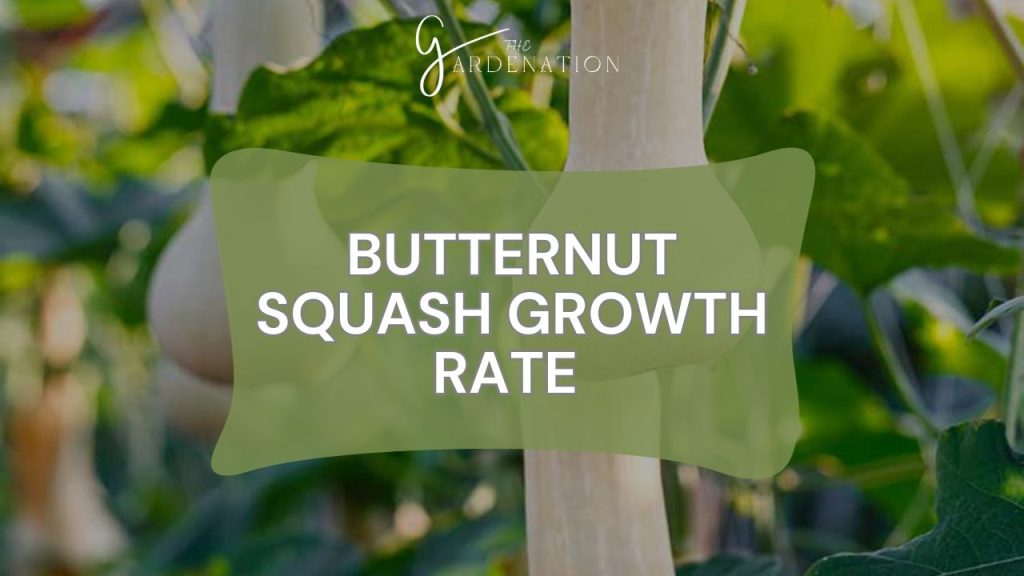
One of the first decisions when planning a butternut squash crop is choosing between vining or bush cultivars. Vine varieties produce long running stems that can reach over 15 feet, while bush types feature more compact growth ranging from 3 to 5 feet in length.
On average, most butternut squash varieties will be ready for harvest between 85 to 105 days after planting. However, growth rate and total size can vary significantly based on the specific cultivar.
For home gardeners with limited space, bush varieties like ‘Burpee’s Butterbush’ offer a practical solution, only requiring a 3-foot planting radius. Other productive bush-type options include ‘Honey Bear’ and ‘Bonbon’.
When dealing with shorter growing seasons, early varieties like ‘Honey Bear’ and ‘Bonbon’ may produce mature fruit 5 to 10 days faster compared to standard cultivars. I try ensuring the plant has enough time to fully develop before early winter frosts is critical.
For more information about kitchen gardens you can visit: Broccoli Plant Growing Stages
Butternut Squash Growing Stages
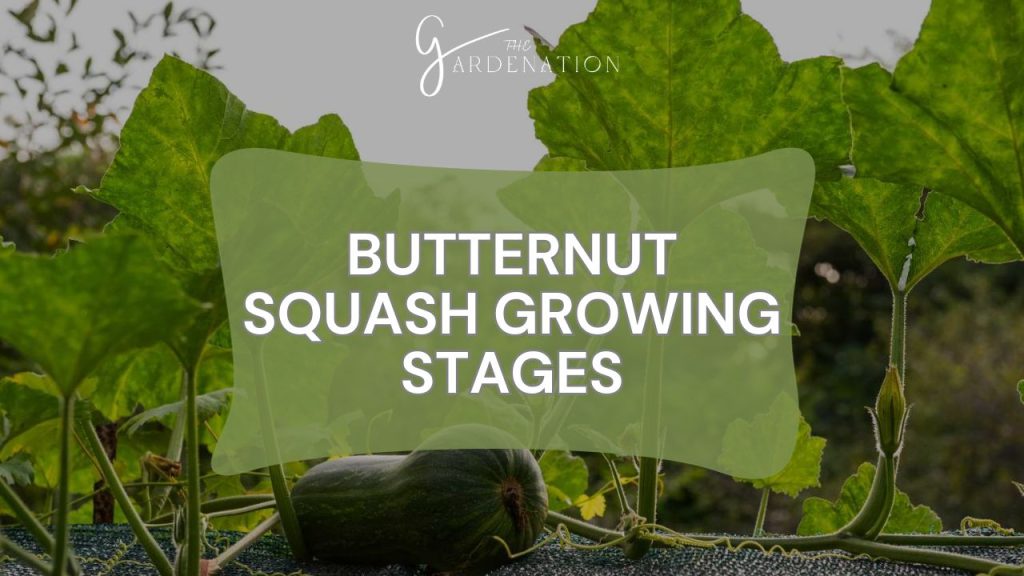
Understanding the phases of butternut squash growth helps gardeners provide attentive care throughout the plant’s development. From germination to fruit maturation, each stage has unique requirements to foster optimal plant health.
Seed Germination
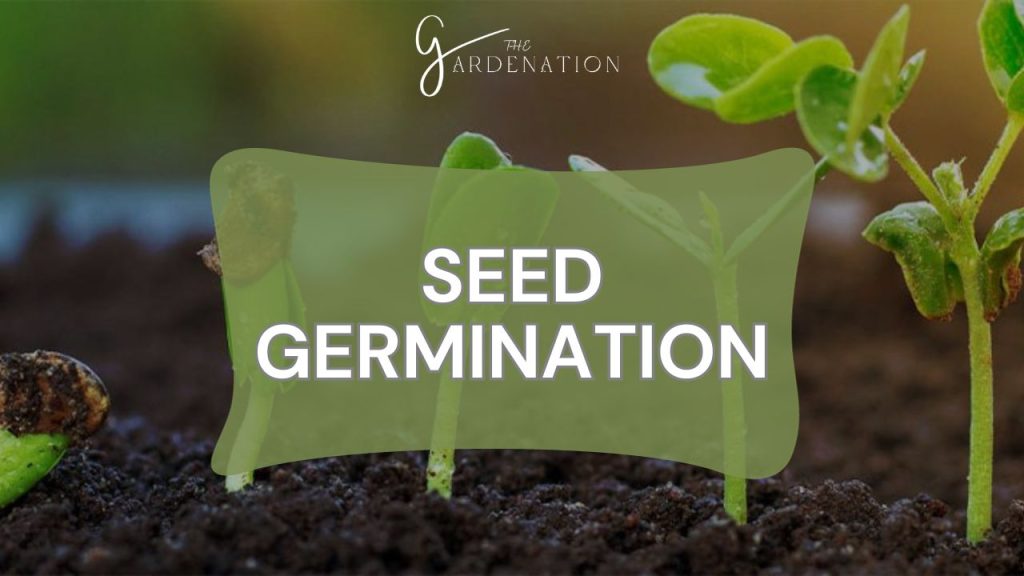
Seeds germinate best in warm soil, taking between 5-10 days to emerge at minimum soil temperatures of 70°F. I sow seeds 1 inch deep in hills/raised mounds spaced 4 feet apart.
Seedling Stage
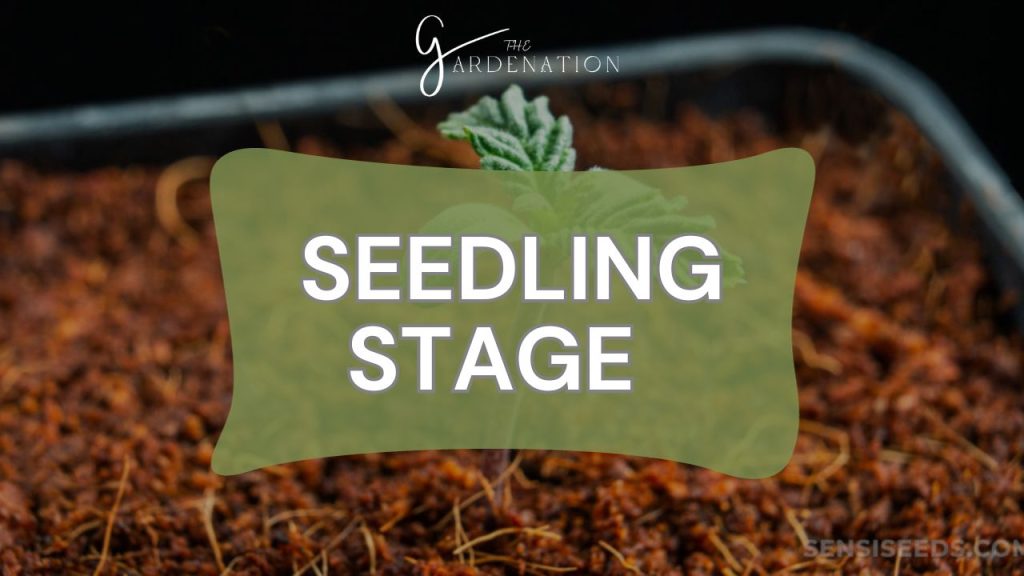
Seedlings appear with the first pair of smooth, rounded leaves called cotyledons. I thin seedlings to 2-3 plants per hill once the first set of true leaves emerge.
Vegetative Growth
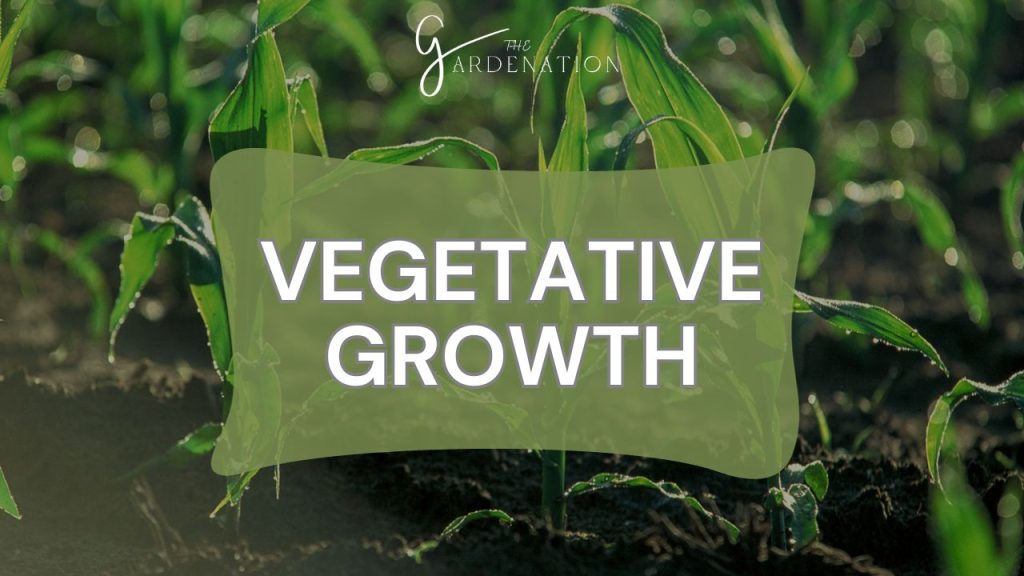
Rapid vine growth begins 3-4 weeks after seedlings emerge. Long vines may require trellising for support and improved airflow. Male and female flower buds become visible where vines and stems meet.
Flowering
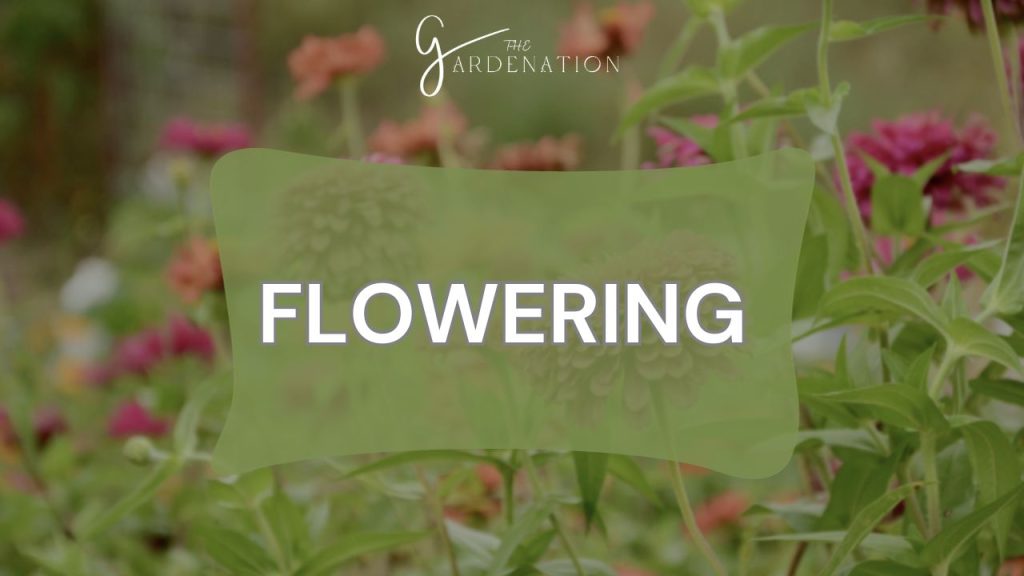
Yellow male flowers typically emerge first, followed in 1-2 weeks by female flowers. Female flowers feature a visible baby squash below the bloom.
Pollination

Bees play a key role in transferring pollen from male to female flowers. Each successfully pollinated female flower produces a single squash.
Fruit Development
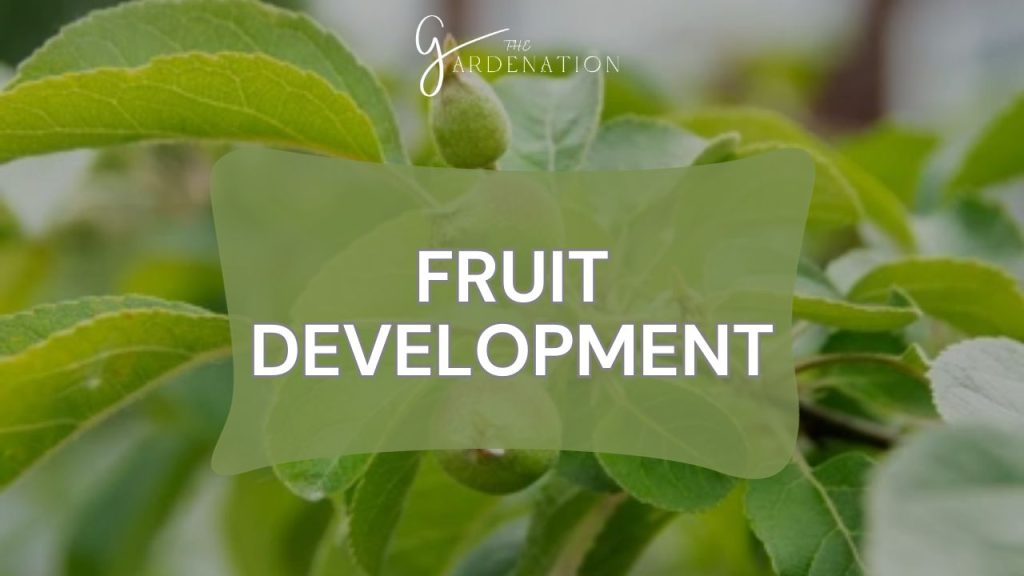
It takes approximately 50-55 days from pollination until fruit reaches full maturity. Immature fruit starts off creamy white then transforms to its iconic pear-shape and tan color.
Butternut Squash Care and Maintenance
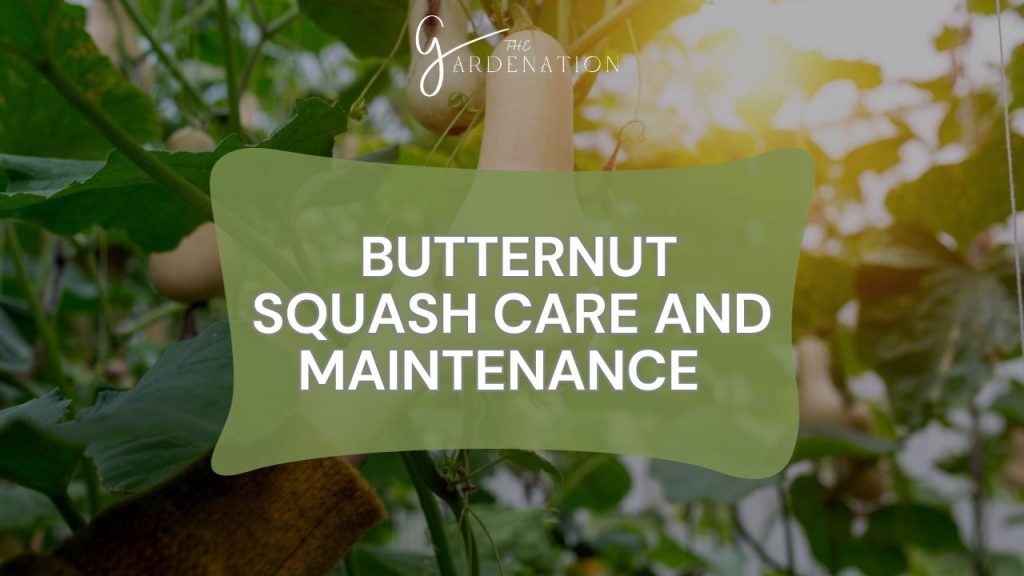
Caring for butternut squash plants through each phase of development is vital to growing a healthy, high-yielding crop. This involves meeting the nutritional, water, and environmental needs at the proper times.
Watering
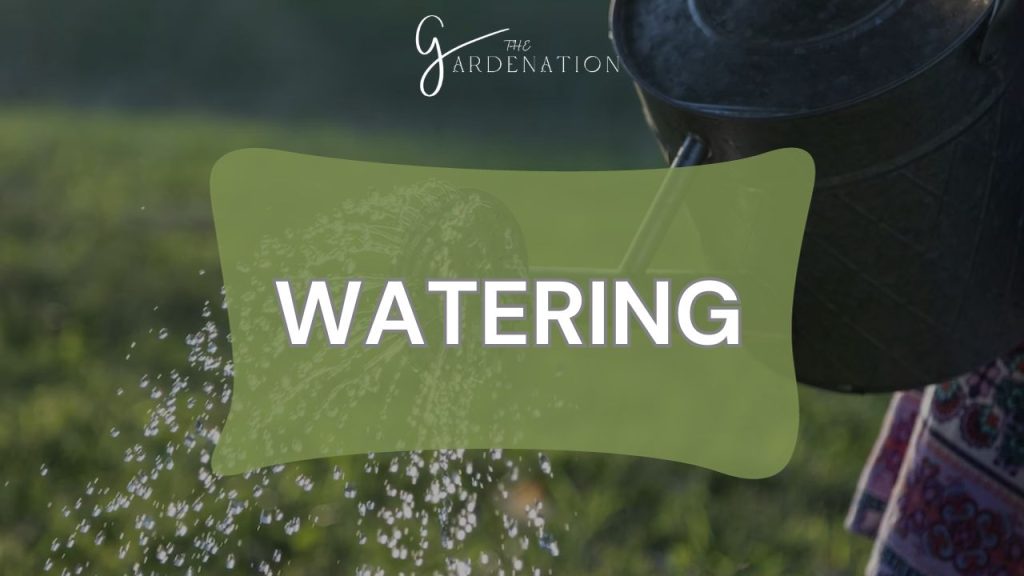
Butternut squash requires consistent moisture for strong vines and fruit production. I water plants thoroughly ensuring saturation throughout the entire root zone. I allow the soil surface to dry out slightly between waterings to prevent fungal diseases.
Fertilization
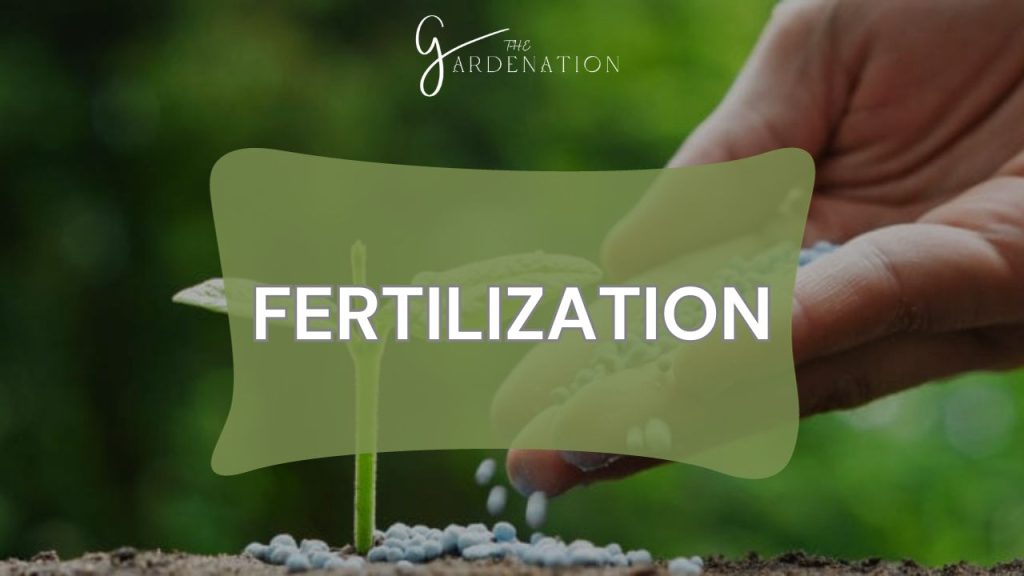
I fertilize plants when the first flowers appear using a balanced 10-10-10 analysis fertilizer. I side dress vines with a nitrogen-rich fertilizer once fruit begins developing. I always follow label instructions carefully and avoid over-fertilization.
Training Vines

I guide wandering vines in the desired direction to prevent overcrowding. I prune vines selectively to improve airflow and light penetration.
Pest and Disease Prevention
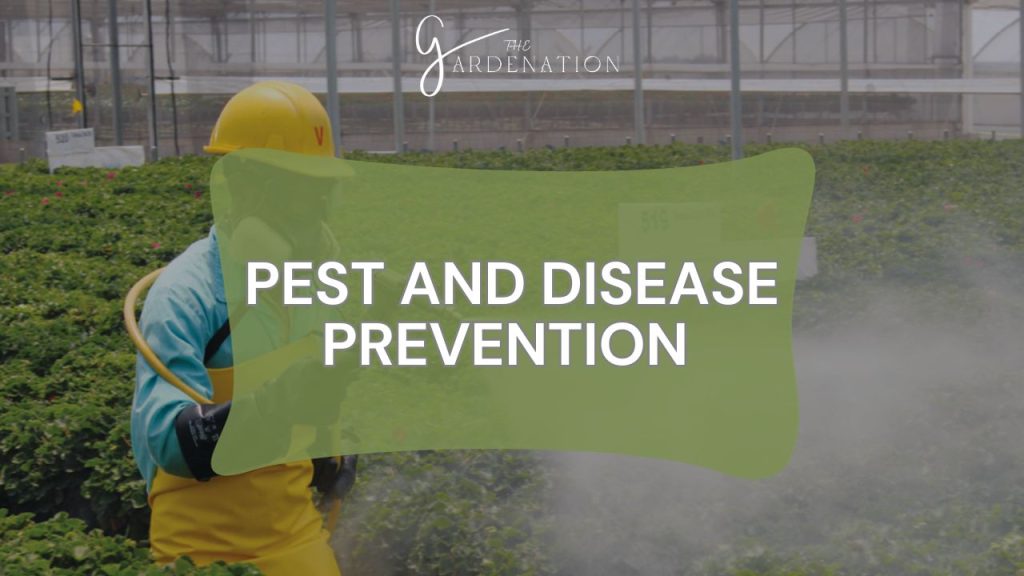
I scout plants frequently and take prompt action at first signs of powdery mildew, downy mildew, cucumber beetles, squash bugs, squash vine borers, viral diseases, blossom end rot, etc. I remove weeds, debris, and infected plant material throughout the growing season.
Flowering
The flowering stage marks a critical juncture in butternut squash cultivation. Proper pollination must take place to ensure fruit production from the female flowers.
As butternut squash plants enter the flowering phase, they produce bright yellow male flowers first. These blooms feature a straight stem and do not bear fruit. After 7-10 days, female flowers emerge identifiable by the visible baby squash below each blossom.
For the fruit to develop, the female flower must receive pollen from the male flowers. Bees and other insect pollinators naturally facilitate this transfer between the two bloom types. However, I sometimes also hand-pollinate flowers using a small paintbrush.
Once successfully pollinated, the female flowers begin developing into the iconic pear-shaped winter squash. Over the next 50 to 55 days, the fruit transforms from creamy white to tan and develops a hardened outer rind. Butternut squash reaches full maturity when the skin becomes tough and deep tan in color.
Harvesting Butternut Squash
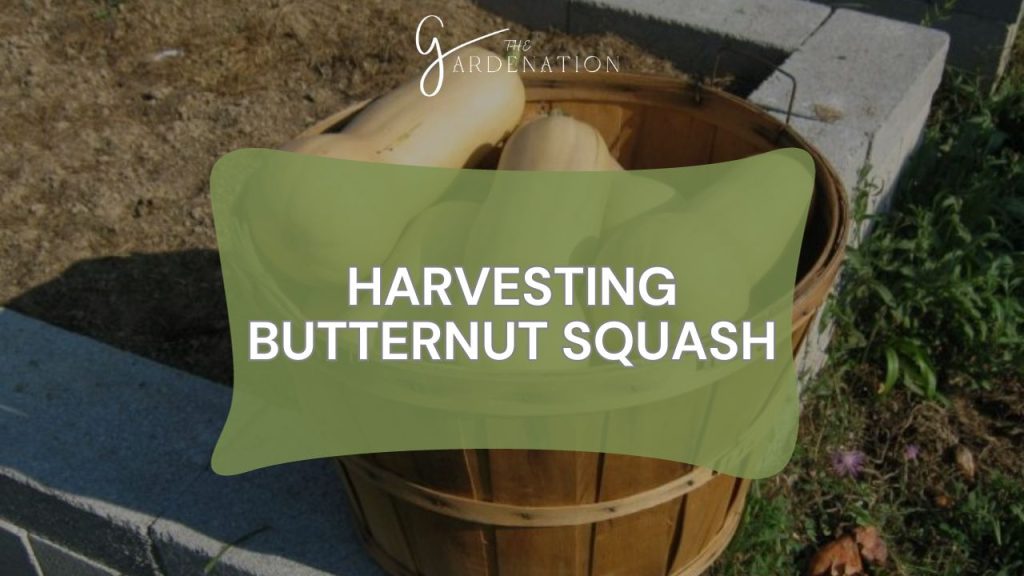
Determining the ideal time to harvest butternut squash helps ensure peak flavor and quality. While the duration varies slightly across cultivars, most varieties require 105 days from sowing seed to fruit maturation.
I monitor squash development closely as the season progresses, checking for signs they are ready for picking. A mature butternut squash features tough, deep tan skin that resists denting from a fingernail. The curly tendril nearest the fruit stem also begins drying out and turning brown.
Timely harvesting is essential to prevent exposure damage from early winter frosts. During cooler temperatures, the squash vines and fruit become more susceptible to chilling injury and rot. I [lan to pick all mature squash before nighttime temperatures consistently drop below 45°F.
When harvesting, I use a sharp knife to carefully cut squash from the vines, leaving several inches of stem attached. Then, I cure the butternut squash for 10 to 14 days in a warm, dry area out of direct sunlight before long-term storage.
Frequently Asked Questions
How many butternut squash can I expect per plant?
On average, a healthy butternut squash plant produces 1 to 2 mature fruits. However, vining varieties grown vertically on a strong trellis system can yield 3 to 5 squash per plant. Proper spacing, pruning, pollination, and nutrient levels also impact productivity.
Should I provide climbing support for vining butternut squash?
Installing vertical supports like trellises or fencing is highly recommended for vining varieties. This keeps long, wandering vines organized and prevents overcrowding. Support systems also increase light exposure and airflow circulation to encourage more female blossoms and higher yields.
Why is my butternut squash production low?
Factors like poor pollination, inconsistent moisture, lack of nutrients, excessive heat, pest damage, and disease pressure can all limit fruit production. Reviewing cultivation practices to address any environmental stressors or resource deficiencies can help optimize plant health and squash yields over time.
Conclusion
Butternut squash is one of the most rewarding winter vegetables to add to any home garden. While it does require ample space and a moderately long growing season, butternut squash is actually quite simple to cultivate. By understanding the various plant growth stages, providing attentive care, and mastering proper pollination techniques, gardeners can enjoy bountiful harvests.
Whether you’re working with limited garden space or have plenty of room for vining squash to wander, there is a butternut squash variety to suit your needs. Bush cultivars offer compact growth habits perfect for small yards or container gardening. Meanwhile, larger vine types can be trellised vertically to maximize production in narrow plots.
As you embark on your butternut squash growing adventure, keep this guide on hand as a helpful reference. Follow the best practices outlined above from seed starting through harvesting, and you’ll be well on your way to growing impressive, high-quality butternut squash!


One Comment